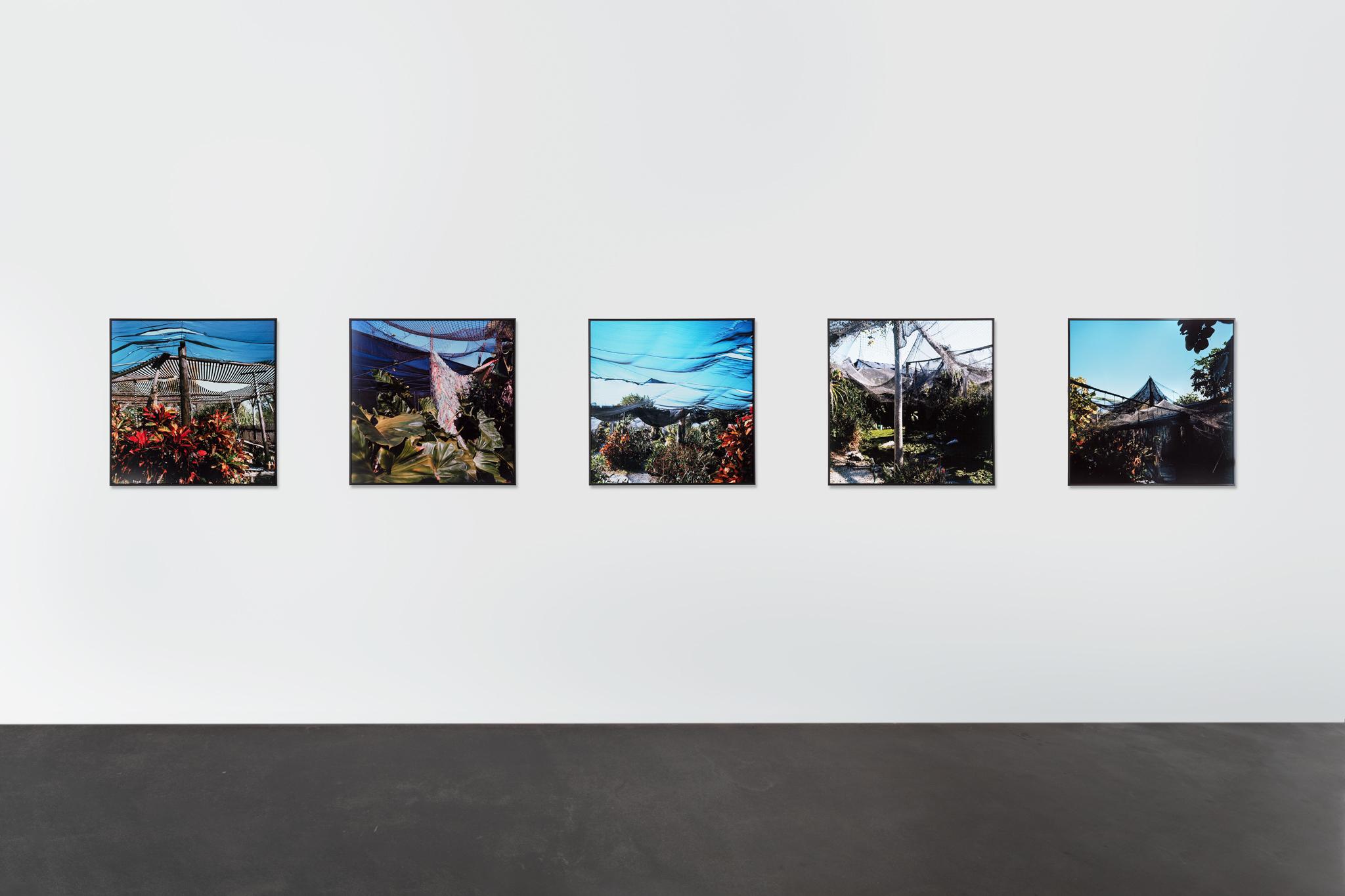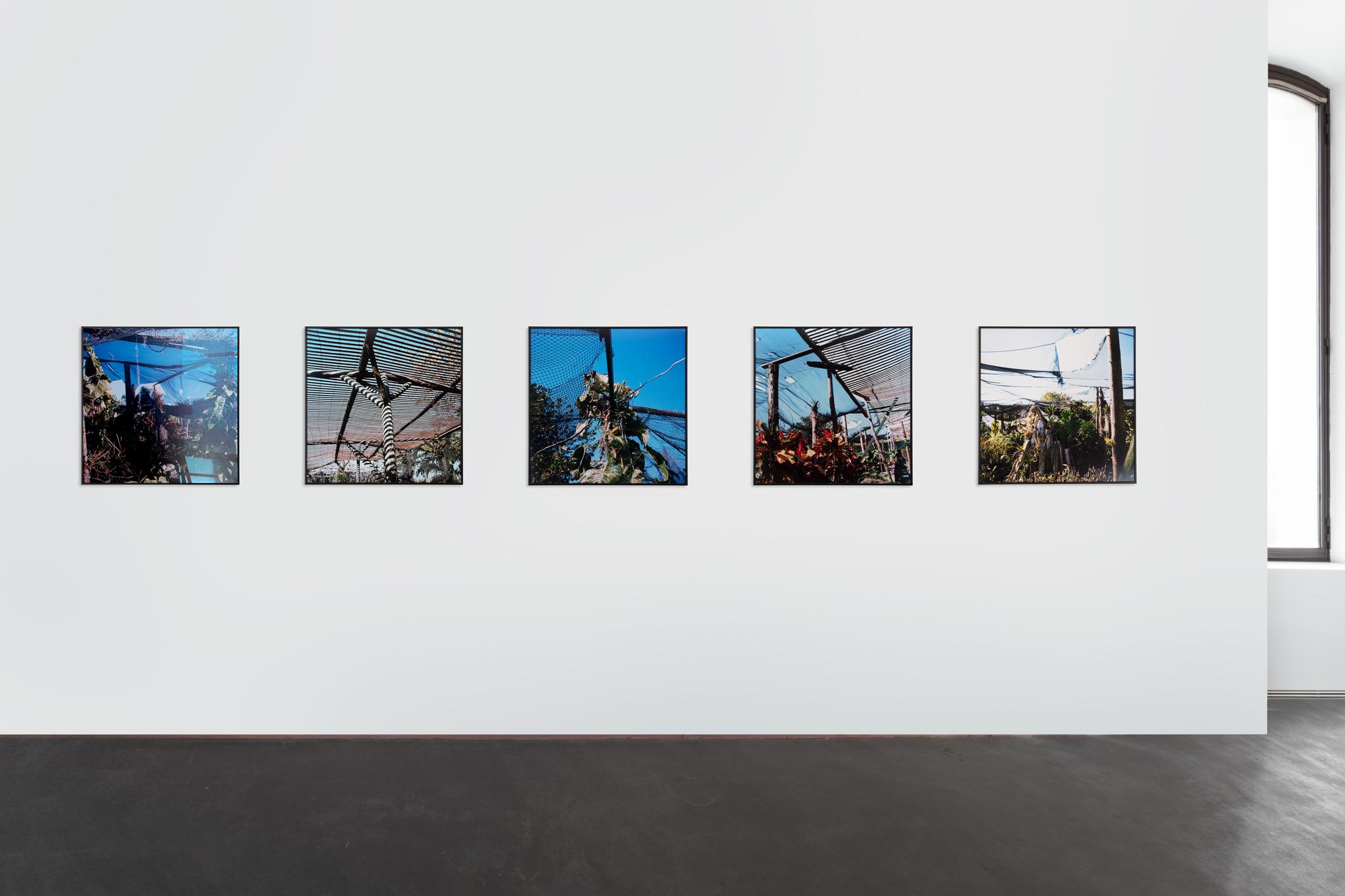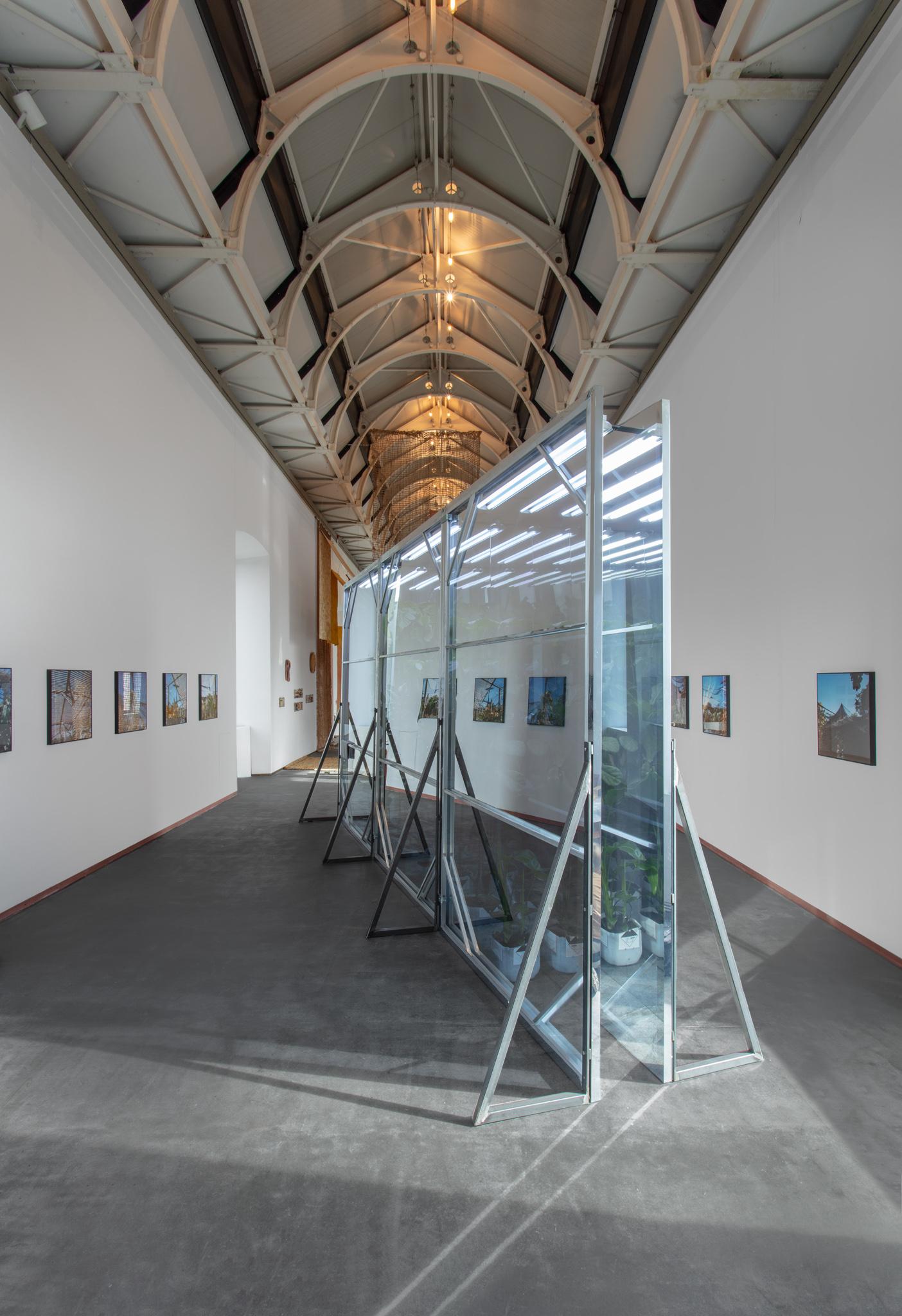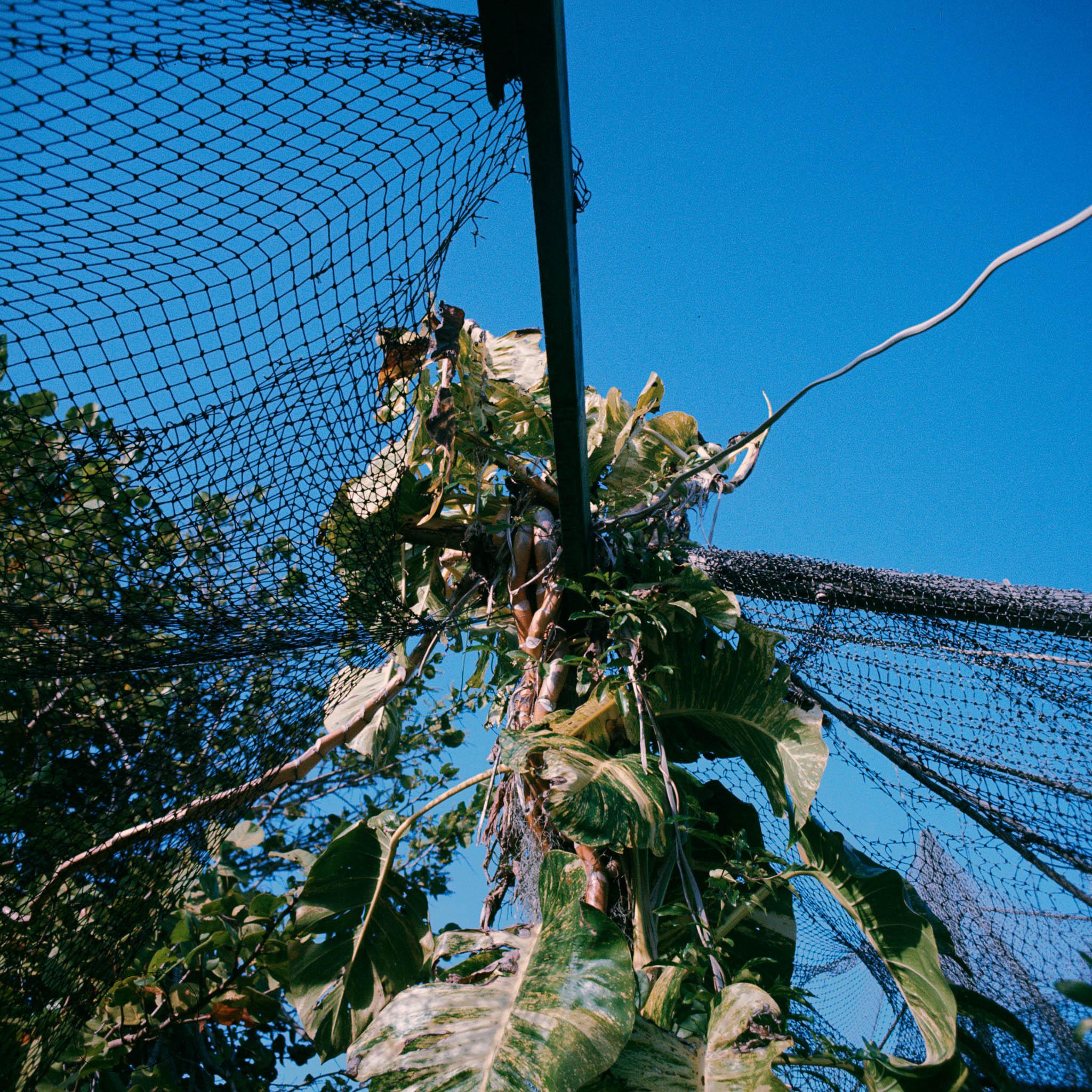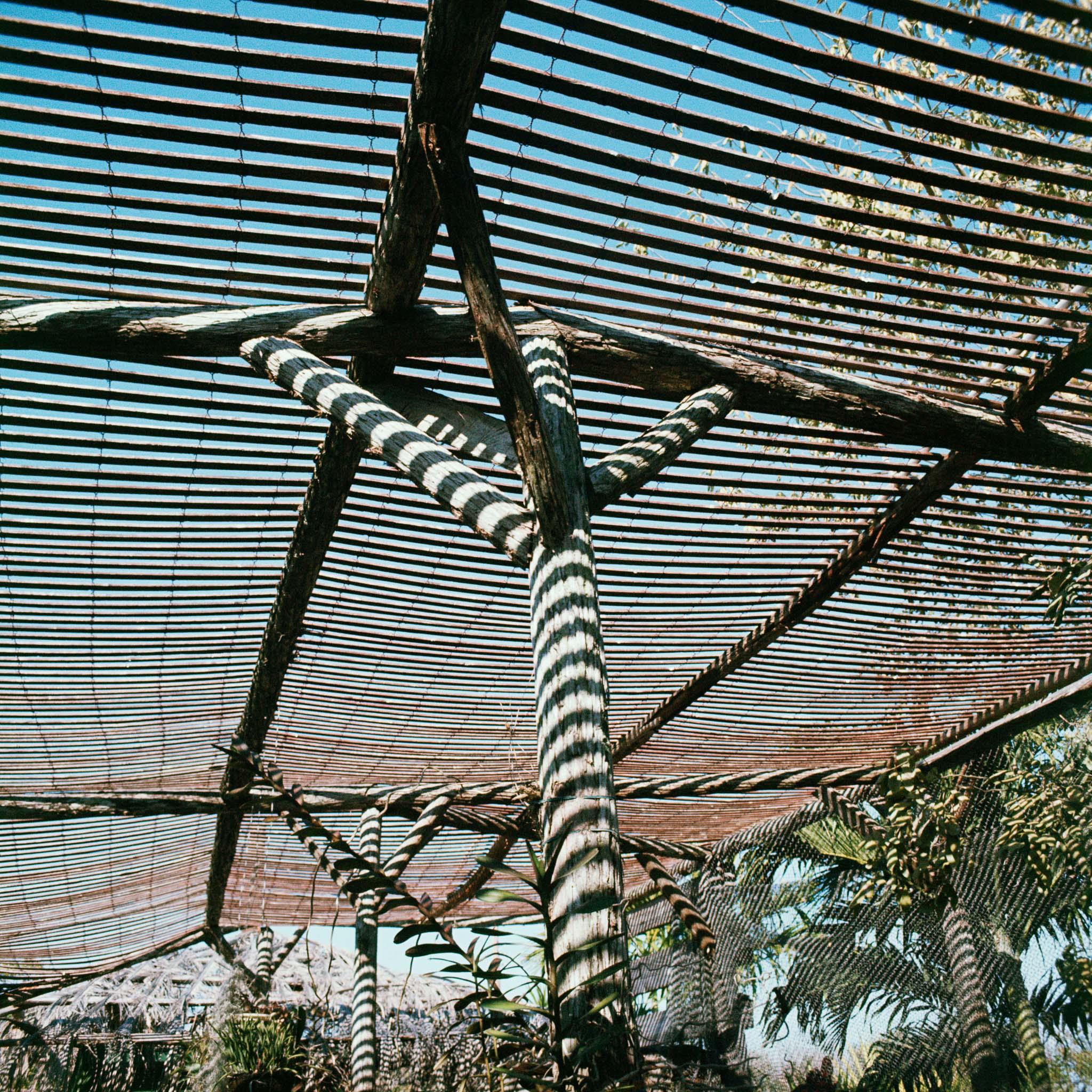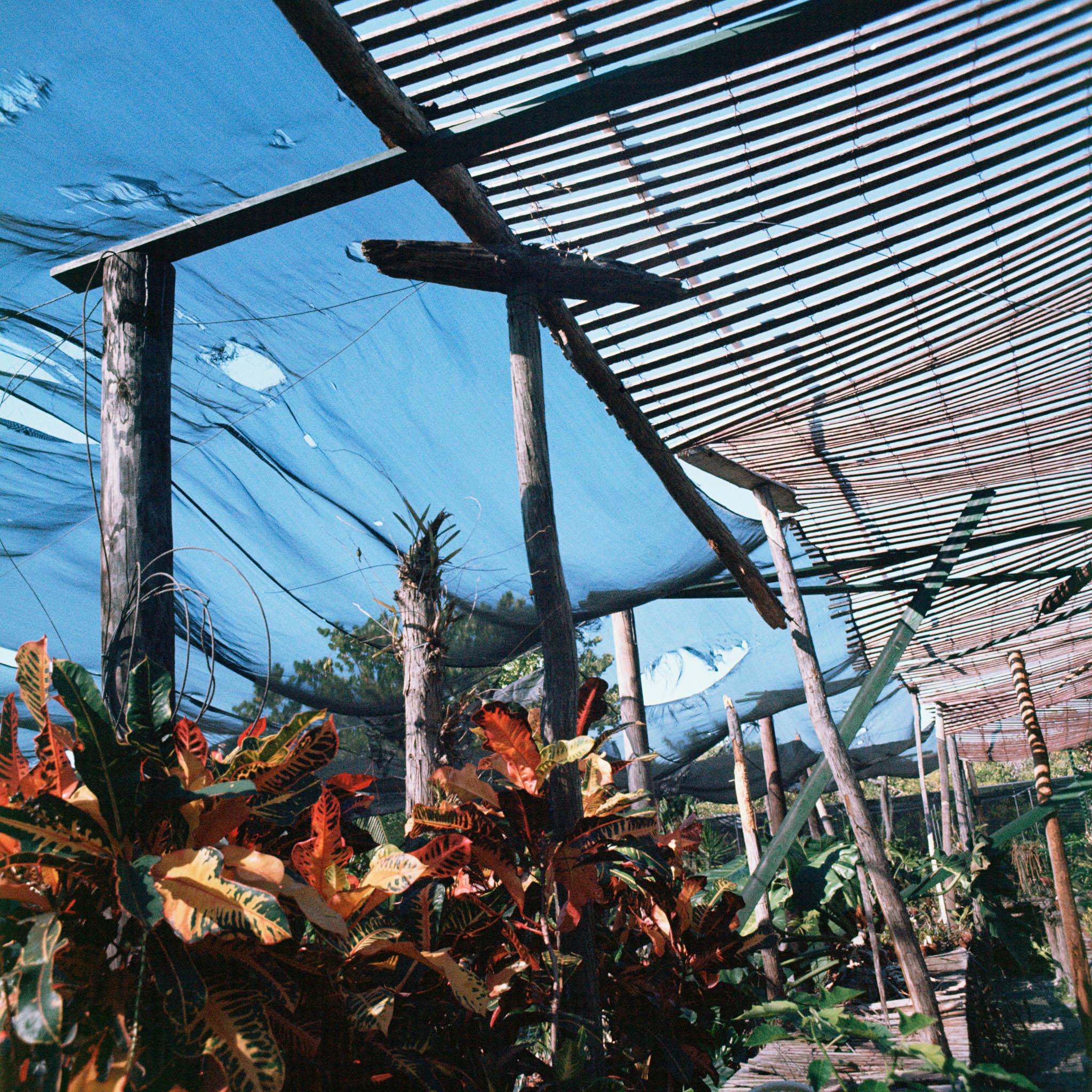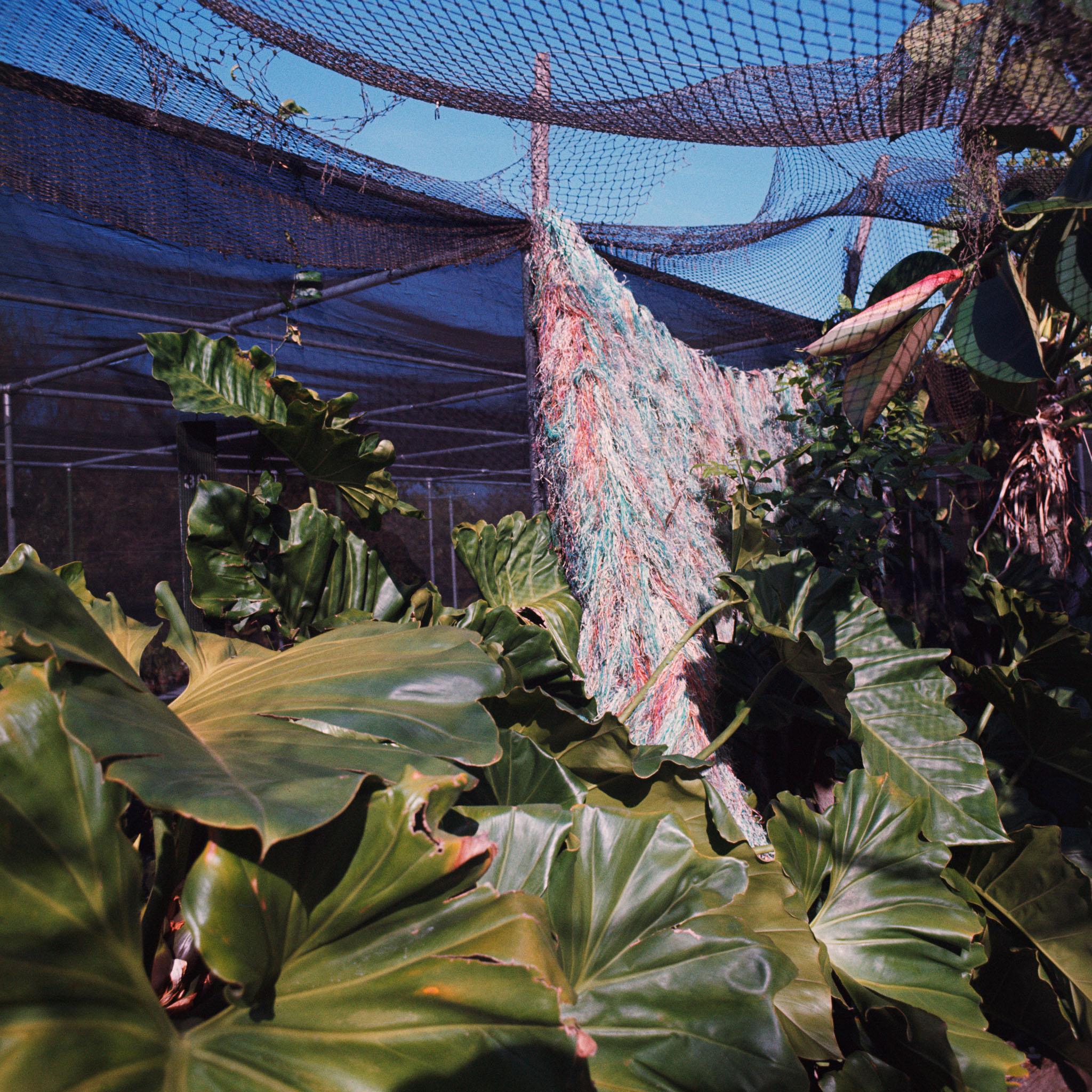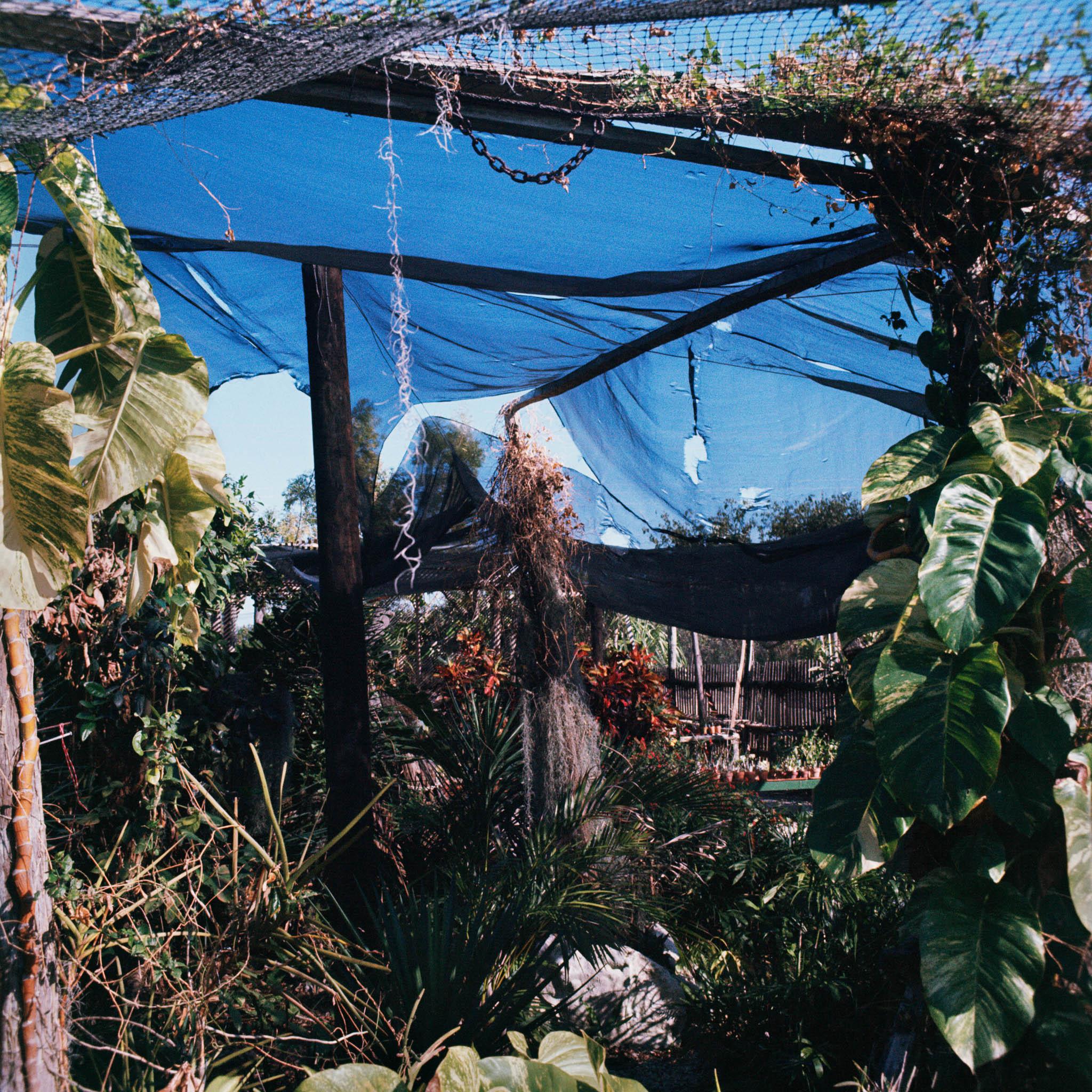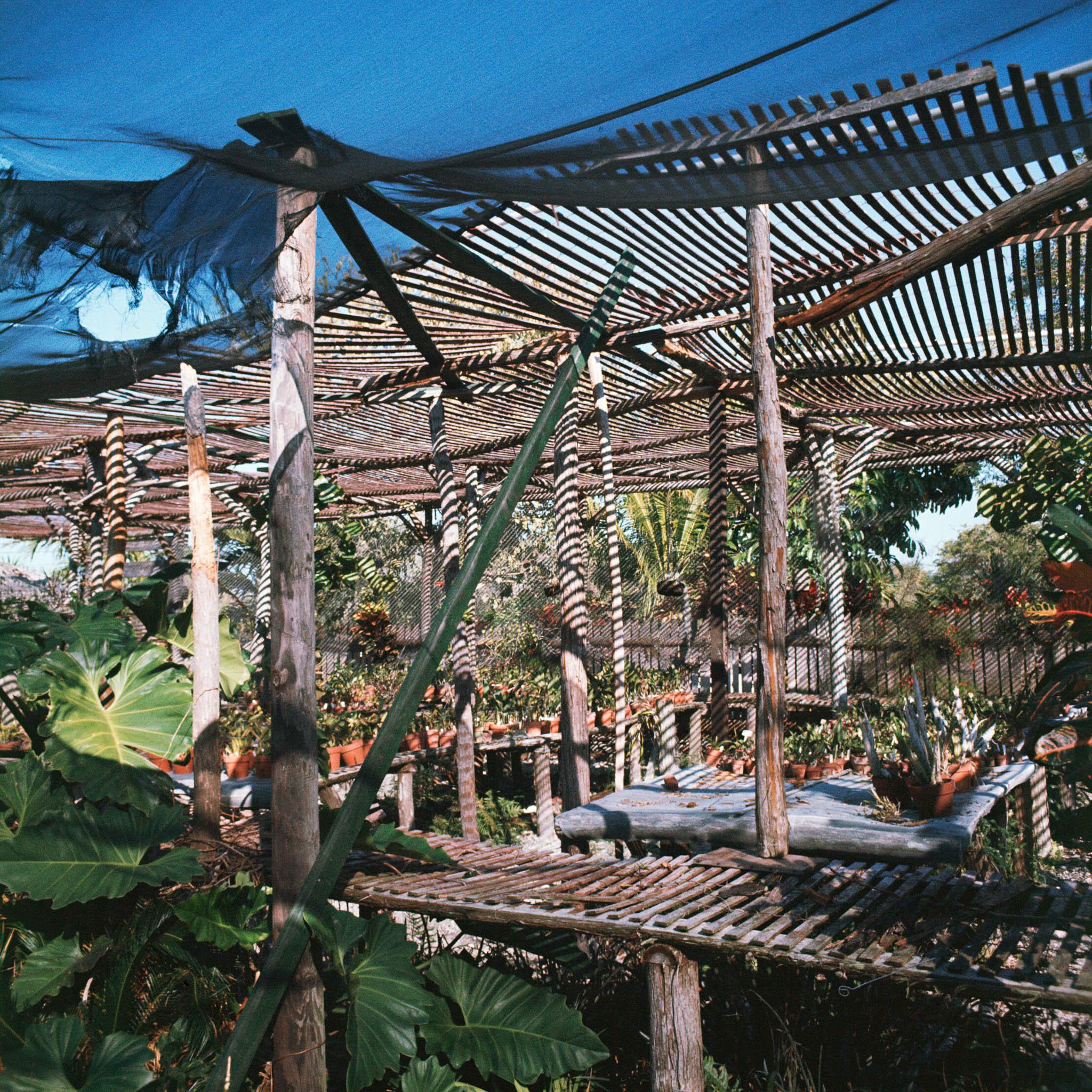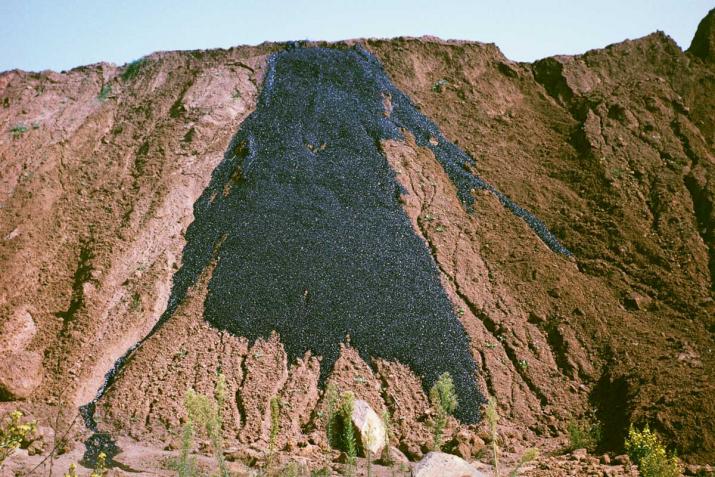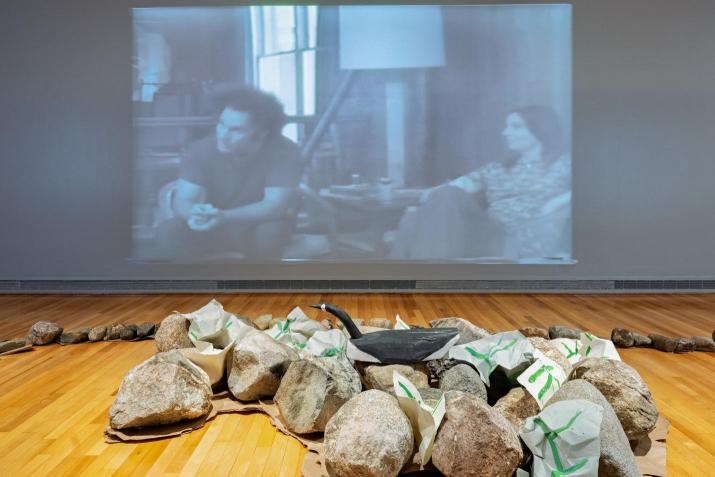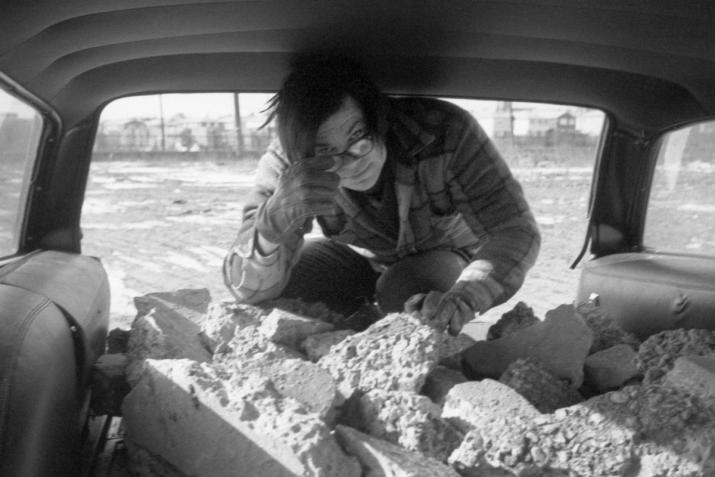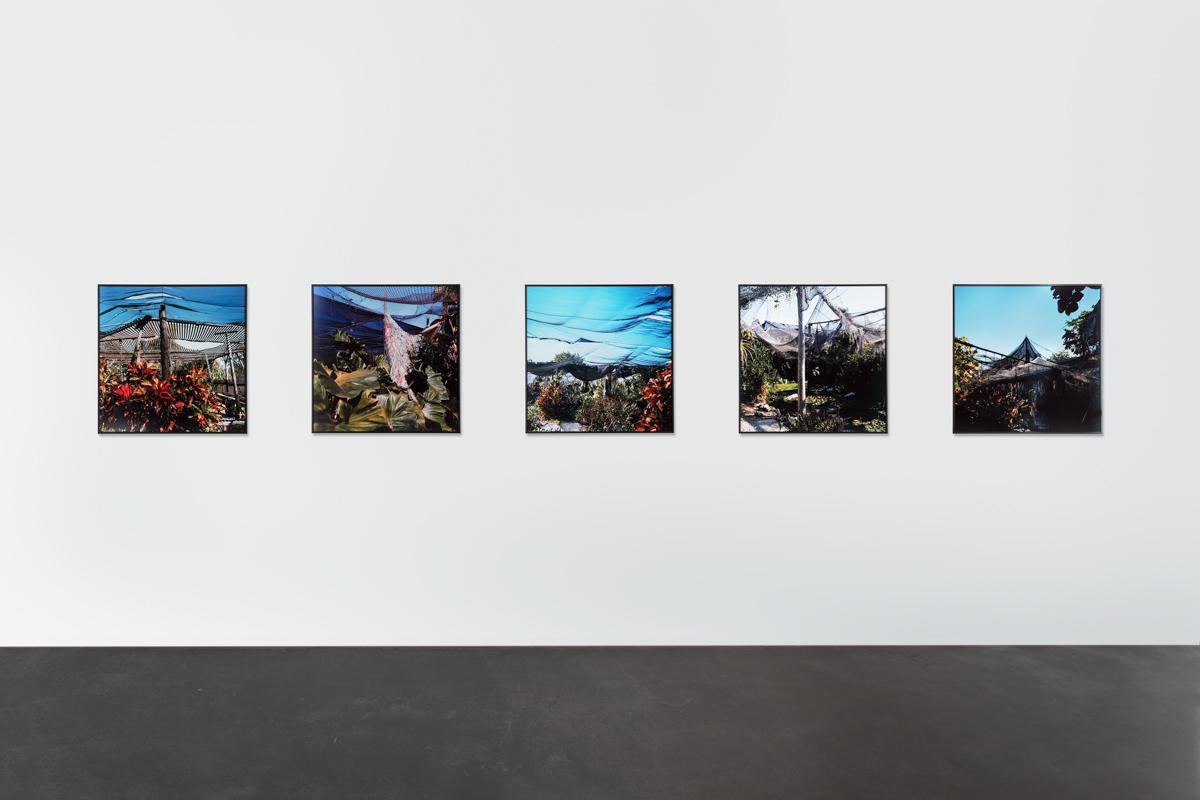
Mutual Aid. Art in Collaboration with Nature

Robert Smithson's Overgrown Structure (1971) is currently on view in the exhibition Mutual Aid. Art in collaboration with nature at Castello di Rivoli Museo d’Arte Contemporanea, Rivoli-Torino. The exhibition is curated by Francesco Manacorda and Marianna Vecellio and focuses on the "creative collaboration between humans and the non-human world by gathering a selection of artists who have addressed the interdependence between humans and nature from the 1960s to today."
While visiting the Florida Keys in 1971 Robert Smithson created Overgrown Structure—a series of twenty images of a garden with abundant tropical foliage completely covered in nets. The netting keeps out birds and other small animals, mitigates the power of the sun, and provides a structure for growth. While the foliage grows, the nets become pulled into the structure of tree and plant tentacles. A consistent interest for Smithson is the interdependent relationship between human beings and the non-human beings and conditions that form our surroundings—the interrelationship between human-made structures and botanical growth in Overgrown Structure illustrates this enduring fascination for Smithson.
Mutual Aid is on view at Castello di Rivoli Museo d'Art Contemporanea through March 23, 2025. Further information on the exhibition from Castello di Rivoli is below.
From Castello di Rivoli:
The show profiles different phases of artistic reflection on ecology, culminating in concerns around the current climate crisis and the theoretical developments which put into question the centrality of man in the natural system. The project focuses around the act of sharing the creative process between artists and natural elements (animal, vegetable and inorganic), interpreted by the works of artists such as Maria Thereza Alves, Michel Blazy, Bianca Bondi & Guillaume Bouisset, Caretto/Spagna, Agnes Denes, Hubert Duprat, Henrik Håkansson, Tamara Henderson, Aki Inomata, Renato Leotta, Nicholas Mangan, Yannis Maniatakos, Nour Mobarak, Precious Okoyomon, Giuseppe Penone, Tomás Saraceno, Robert Smithson, Vivian Suter and Natsuko Uchino.
The title of the exhibition is inspired by the concept of mutual support proposed by Russian philosopher and zoologist Piotr Kropotkin (1842-1921) in his book Mutual Aid – A Factor of Evolution, published at the beginning of the last century. Kropotkin claims that the survival of species does not only benefit from competition, as Charles Darwin argued; on the contrary he demonstrates that, when a system has few resources and is unstable, survival is more likely if the elements in play collaborate and share a common plan. This makes ‘mutual aid’ a key factor in evolution, particularly in times of crisis. This attitude is highlighted in the exhibition by a selection of works of art started by humans but ‘finished by nature’ or co-created thanks to the contribution of non-human elements and agents.
Mutual Aid – Art in collaboration with nature invites us to reconsider the validity of the separation between nature and culture, reinterpreting them instead as collaborating elements called upon to support and nourish each other. The exhibition proposes to the public an ecosystemic vision and an innovative and urgent approach to major environmental issues, based on coexistence, sharing and the value of multi-species collective creativity and planning.
